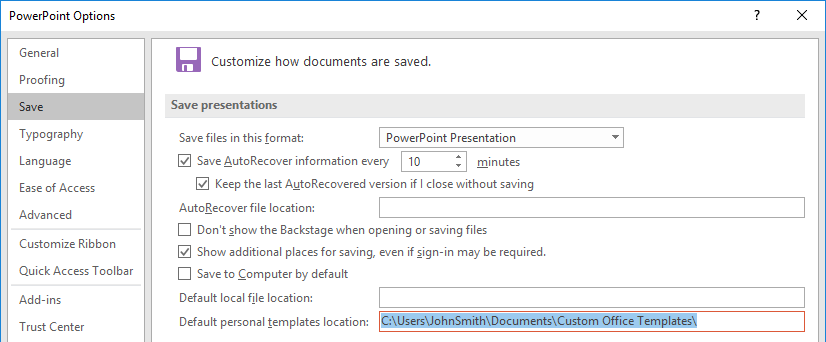
Since you want to add some security features, however, click on “Security Options”:įor the document I was saving as I did this process, I didn’t want to have a password to prevent it being opened, but instead one that made it difficult to copy or print, just as you seek. If you just want to send a regular PDF without any constraints, this is far enough: give it a good name, click “Save” and you’re done.

Once you get to the print dialog window, however, don’t choose “Okay” but instead click on the “PDF” button on the lower left corner:Īs you can see, there are lots of interesting things you can do here, but we’ll just choose “Save As PDF…”, which brings us here: And it’s easy too… just choose “File” –> “Print”:
#Save a powerpoint from 2016 for a 2011 mac mac os x
Instead you need to use the print to PDF feature of Mac OS X that’s one of its killer capabilities. That’s kinda dumb, but I am guessing that it’s a technology licensing issue more than anything else. What it can’t do is save your presentation as a PDF. To get a PDF from Microsoft PowerPoint, however, is a bit of a trick because while PowerPoint can save your presentation in a lot of different formats, as you can see here: Heck, even the nerds in IT can read it even though they’re running Linux-based netbooks. I think you’re right to be a bit curious and to take some steps to control how widely that information can be disseminated.Īs you know, Adobe’s PDF documents are a great choice, and give you lots of control over what the recipient can do with the information in a way that’s portable across both the Mac and Windows. If you’re pitching a client on your services, there’s little reason why they would want to disseminate your pitch to the rest of the company unless it’s some sort of üaut ber-egalitarian firm, and few really are, once you look closely.

Hmmm… that is a bit odd, now that you mention it.


 0 kommentar(er)
0 kommentar(er)
